QuestionQUESTION: I am setting up a freshwater 300 gallon tank, three weeks ago I filled it, added some pond filter media (green ribbon like stuff),two sponge filters from established aquariums, some petrified wood and slate, four ceramic airstones and some guppies...a week ago I added some honduran redpoint juvies and some electric blue cichlid juvies. Figuring the tank was probably good to go, I added three large gold severums and a pair of ngara flametails. After adding them, I checked the water..(Dumb, I know, should have checked first)...the Nitrite level is off the scale. My problem is that I cannot get the fish out of the tank without totally draining it (tank is 36 inches deep and 24 inches wide and 7 and a half feet long, and has a center bulkhead. I have to climb a ladder to service the tank)...what can I do to get the nitrite levels down before it kills my cichlids? I added three more sponge filters and three more airstones and did a 10 percent water change. With such a large tank, it is difficult to change more then 10 percent as I have a well and cistern and the water is too cold coming from the tap to add more then 30 gallons at a time. The tank is in my garage and I open the garage door every day to let the sun warm the water, so of course I am getting some algae growth on the sides of the tank..I would like to add a large pleco but need to get the nitrite levels down..the tank is pre drilled but I don't think I can set up a sump at this time..due to the size of the tank, it is difficult to work with....thanks
ANSWER: Hi Brenda,
There is not much you can do, except do 10% water changes everyday until you get your water chemistry right. This means zero ammonia, zero nitrites, and nitrates should be low. Cycling a tank takes time, and 3 weeks was not enough time for it to cycle properly. You did right by adding established filters to your tank. There was no need to add guppies. With established filters, you must wait until your water chemistry is perfect before adding fish. Do not clean your filters, and let it run. When you do eventually clean your filter, never clean your sponge with tap water. Rinse it in water that you have removed from your tank. A Sponge is full of good bacteria, and when we rinse it under tap water, we kill the good bacteria that fish need to survive, so always rinse it in water from the tank. A sponge is good for a very long time, until it is old, ragged, and falling apart.
I would also like to add that fluctuating water heat is very bad for fish. The temperature of your tank should always be stable. The same temperature at night, and day.
Keep checking your water chemistry, do water changes until you get it right. This is all you can do.
I hope you save your fish.
Lynda
---------- FOLLOW-UP ----------
QUESTION: hmmm...if I drop the tank to half capacity, 150 gallons, and add more sponge filters, would that help? I have multiple tanks and run three large sponge filters in each one...that way if one air pump malfuntions, I don't lose the tank with the other sponges on different air pumps...I could pull around six large sponges out of the established tanks...do you think that would help?
thanks for your time...I have done the
"rinse the sponge in the tank water I pull out for water changes" thing for quite some time now...
thanks again for all your help
ANSWER: Hi Brenda,
Have you checked your water chemistry in your 300 gallon tank? If you have would you write back to me with the results before you do anything else. I could then be more informed to answer your question.
If you haven't checked, it would be best that you do. I am also a little worried about removing sponges from your established tanks.
---------- FOLLOW-UP ----------
QUESTION: I am not sure what you mean by water chemistry? Ammonia, Nitrite, Nitrate, PH, KH ? I actually have multiple tanks, the sponges I will be removing are excess to the tanks needs....example..I have a 55 gallon with undergravel filter with powerheads, three sponge filters and a power filter....fish load is 5 christmas fulu, 3 hongi and a few corys and bristlenose plecos...I have removed a sponge filter from this tank with no change in the nitrite readings...I check nitrite weekly and others monthly..I do about 10 percent water change once a week and 20 percent ever other week...when they spawn, I usually change water more frequently while they are holding...
AnswerHi Brenda,
There are little test kits on the market which tell you, your ammonia level, nitrite level, and nitrates level. The PH test kit tells you if your water is alkaline, acidic, or neutral. Not all fish live, and need the same PH. ( I think you understand this part)
When a tank as cycled, it will have zero ammonia, zero nitrites, and nitrates should be low. This is very important as ammonia, and nitrite are the number one killer of fish. It is important to have these test to know whether your water chemistry is right, or not.
Adding used sponges to an aquarium helps cycle your tank. A used sponge is full of good bacteria.
When a tank cycles, ammonia turns to nitrites, then to nitrates. During this period, no fish should be added to the tank until all three of these tests read well.
Adding used sponges is always a good idea, to add good bacteria, and help your tank cycle. As for your 300 gallon tank, I would not remove any water, but keep doing 10% water changes to help with the cycling, until you have the right water chemistry. If your other tanks are well cycled, then you can use their sponges to help cycle your 300 gallon tank.
Water changes every week of 25% are very important. If you cannot do 25% water changes, then do 10%, but more often. Adding gravel from an established tank will also help cycle your tank.
I have never dealt with undergravel filters. I have always used Epheim, or Fluval. This is a choice people make. I'm not saying that one is better than the other, but I do prefer canister filters.
I hope this helps you understand a little more about water chemistry. For now do 10% water changes, add sponges, and gravel. Hopefully, your tank will be okay soon.
Lynda

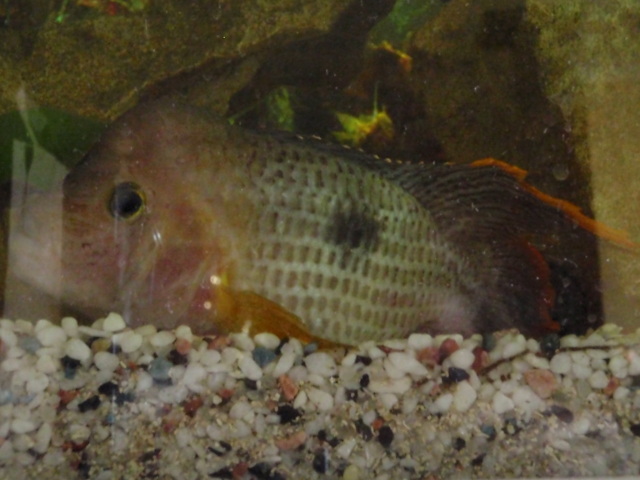 Sinking Green Terror
QuestionGreen Terror Sitting
QUESTION: Hi Ron,
Sinking Green Terror
QuestionGreen Terror Sitting
QUESTION: Hi Ron,
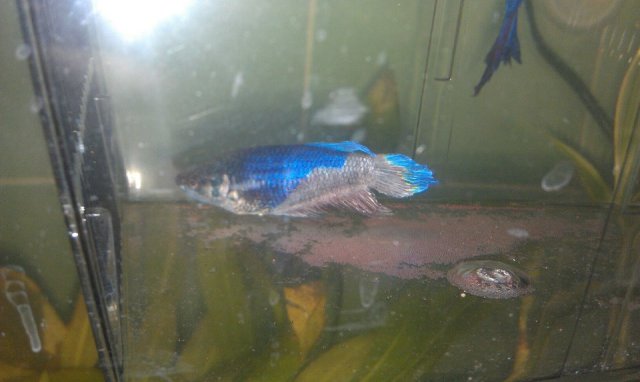 Identify disease?
Question
Betta Disease?
So, I wrote this whole t
Identify disease?
Question
Betta Disease?
So, I wrote this whole t
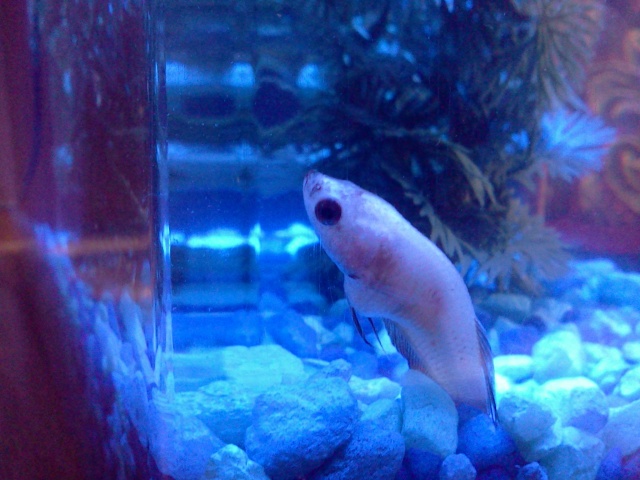 Female Betta Problems
QuestionPenelope
QUESTION: Hi,
I have a female
Female Betta Problems
QuestionPenelope
QUESTION: Hi,
I have a female
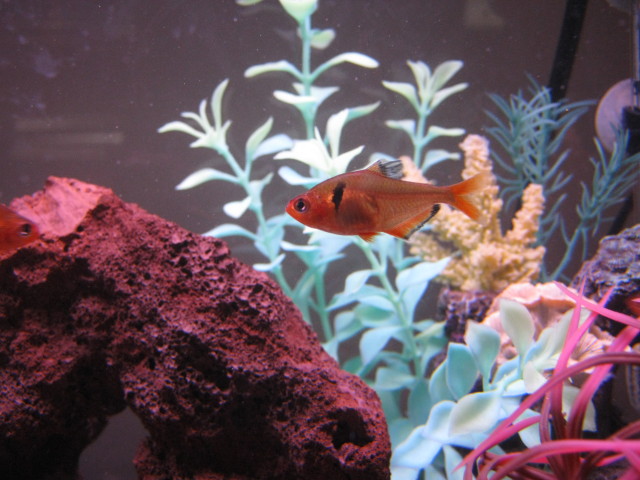 aggression or disease?
Question
tetra fin
Hi, I have a 15 gallon freshwater ta
aggression or disease?
Question
tetra fin
Hi, I have a 15 gallon freshwater ta
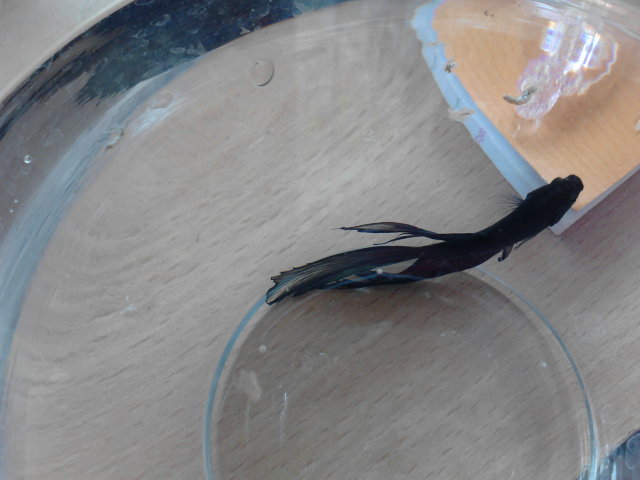 Beta Fish- dull, flits about the tank, lost appetite
QuestionBlue Beta
QUESTION: Hi Jaymie,
I read
Beta Fish- dull, flits about the tank, lost appetite
QuestionBlue Beta
QUESTION: Hi Jaymie,
I read